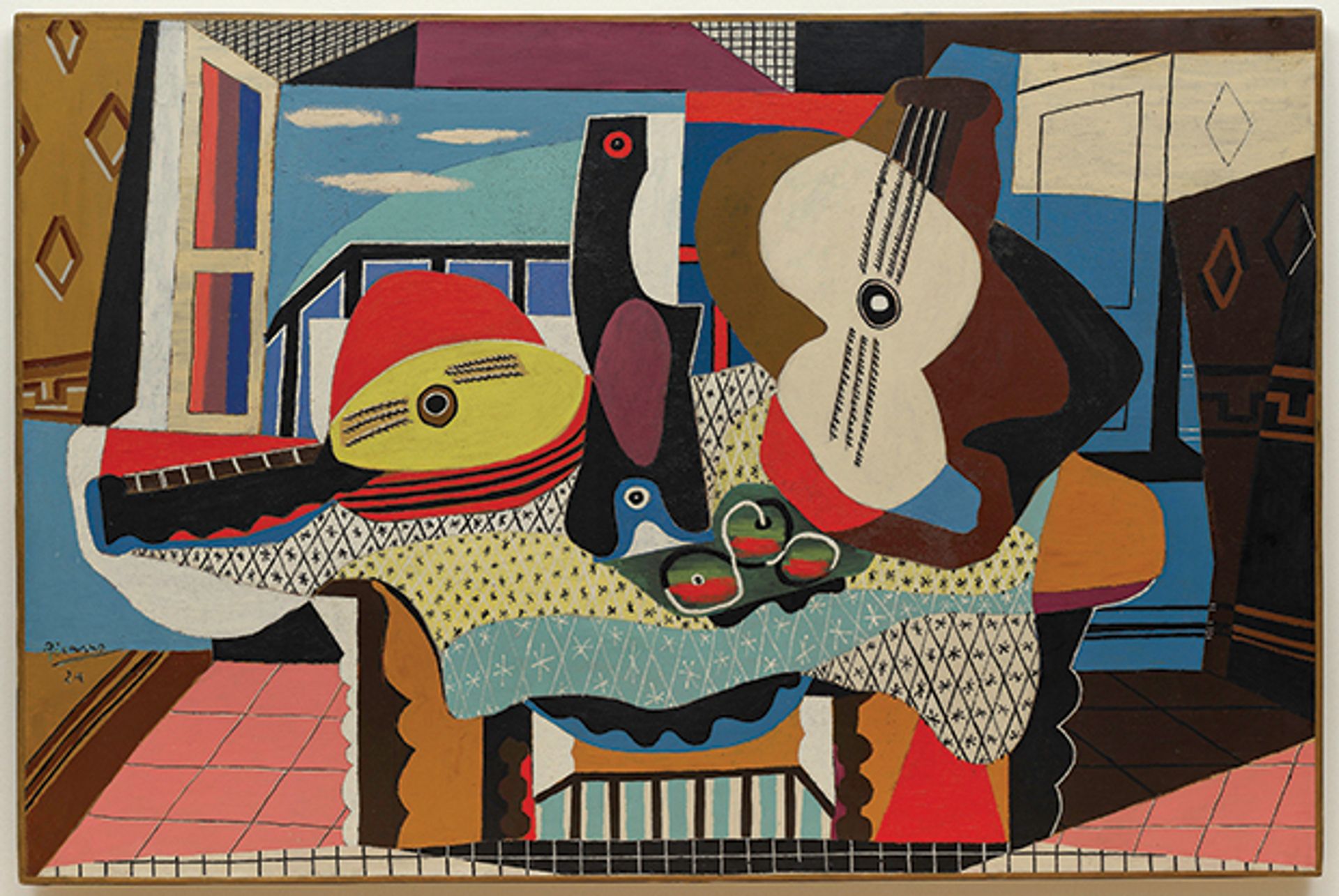Windows on the City: the School of Paris, 1900-1945, at the Guggenheim Museum Bilbao, which brings together more than 50 paintings and sculptures by Modern masters including Pablo Picasso, Constantin Brancusi, Marc Chagall and Wassily Kandinsky, is a reminder of an earlier age, when artists, dealers and collectors of various nationalities converged on the single artistic centre of Paris. Yet the art it spawned was more plural than singular. “The most evident commonality may be the resistance to convention,” says Lauren Hinkson, the Guggenheim’s assistant curator for collections.
The School of Paris turns out to be a deceptively neat term for the multitude of overlapping avant-garde currents that sprang up in the French capital in the first half of the 20th century. Through three generously installed galleries, the exhibition’s broadly chronological narrative sticks to Cubism, abstraction and Surrealism, omitting the Fauves and Dadaists, but incorporating artists that stood apart from the -isms, like Chagall, Amedeo Modigliani and Alexander Calder.
Almost inevitably, Picasso—the ultimate chameleon—comes out on top. Visitors are greeted with the murky dance hall scene of Le Moulin de la Galette (1900), painted when he was still a teenager. With its elaborate gilt frame, it seems to belong to a different century from the radical, spare compositions Picasso produced just a few years later, when he and Georges Braque invented Cubism like “two mountaineers roped together”, as Braque famously described it.
The final section, dedicated to Surrealism and abstraction between the wars, opens with Picasso’s Mandolin and Guitar (1924), a joyfully-patterned still life giving on to a balcony and blue skies. The remarkable distance Picasso travelled from the first picture to this one speaks to the creative energy of an individual rather than a school. This is a painter in holiday mode on the French Riviera—away from Paris’s artistic community and seemingly dwelling little on the world beyond the studio.
The middle gallery makes a stronger case for the direct influence of the Modern city on Modern art. In Robert Delaunay’s large abstract canvas Windows on the City No. 3 (1911-12), the exhibition’s namesake, a green sliver rises amid a shifting kaleidoscope of colour—it is the Eiffel Tower. The structure's swooping bulk inspired more than 30 of Delaunay’s paintings, including Eiffel Tower with Trees (1910) and Red Eiffel Tower (1911-12).

Other highlights include Marcel Duchamp’s sketchy Apropos of Little Sister (1911), a welcome relic from his short-lived Cubist phase; Henri Matisse’s The Italian Woman (1916), an austere, mask-like portrait of his model Laurette with an angular sheet of black hair; and Modigliani’s peachy Nude (1917), which was deemed obscene by Parisian police and withdrawn from the artist’s one and only solo exhibition.
If there is a pick-and-mix feel to the selection, it also reflects the idiosyncrasies of the collection from which it comes. The exhibition presents works from Solomon R. Guggenheim’s (1861-1949) core collection with later acquisitions and gifts, which together form the “subtext” of the show, Hinkson says. So three paintings by Wassily Kandinsky hang alongside biomorphic works by the Surrealists, a nod to Guggenheim’s personal preference, rather than to a shared aesthetic ideology among the artists. On the advice of the German abstract painter Hilla Rebay, the collector acquired more than 150 works from Kandinsky between 1929 and 1937.
Sculpture was an afterthought. It fell to Rebay’s successor as the director of the Solomon R. Guggenheim Museum, James Johnson Sweeney, to fill the gap in the 1950s and 1960s. It was Sweeney who led the acquisition of the magnificent trio of Brancusi's totems in walnut, chestnut and oak: Watchdog (1916), King of Kings (around 1938) and Adam and Eve (1921). He convinced Calder to donate Romulus and Remus (1928), a rangy, wire she-wolf suckling the baby founders of Rome from wooden doorstop teats.
As the Guggenheim Foundation sets its sights on expansions in Helsinki and Abu Dhabi, it is all too easy to forget the roots of what is now a global museums brand. Satellites in Las Vegas and Berlin have come and gone while proposals for Salzburg, Rio de Janeiro, Guadalajara and Vilnius never got off the ground, but the collection remains at the core. In the absence of individual labels or an exhibition catalogue for Windows to the City, the history of that collection will remain invisible to the visitor. But while the show’s central claim—that there was such a thing as a coherent School of Paris—fails to convince, it is simply a pleasure to see so many of the Guggenheim’s early purchases return to Europe after all these years.
Windows on the City: the School of Paris, 1900-1945, Guggenheim Museum Bilbao, until 23 October

